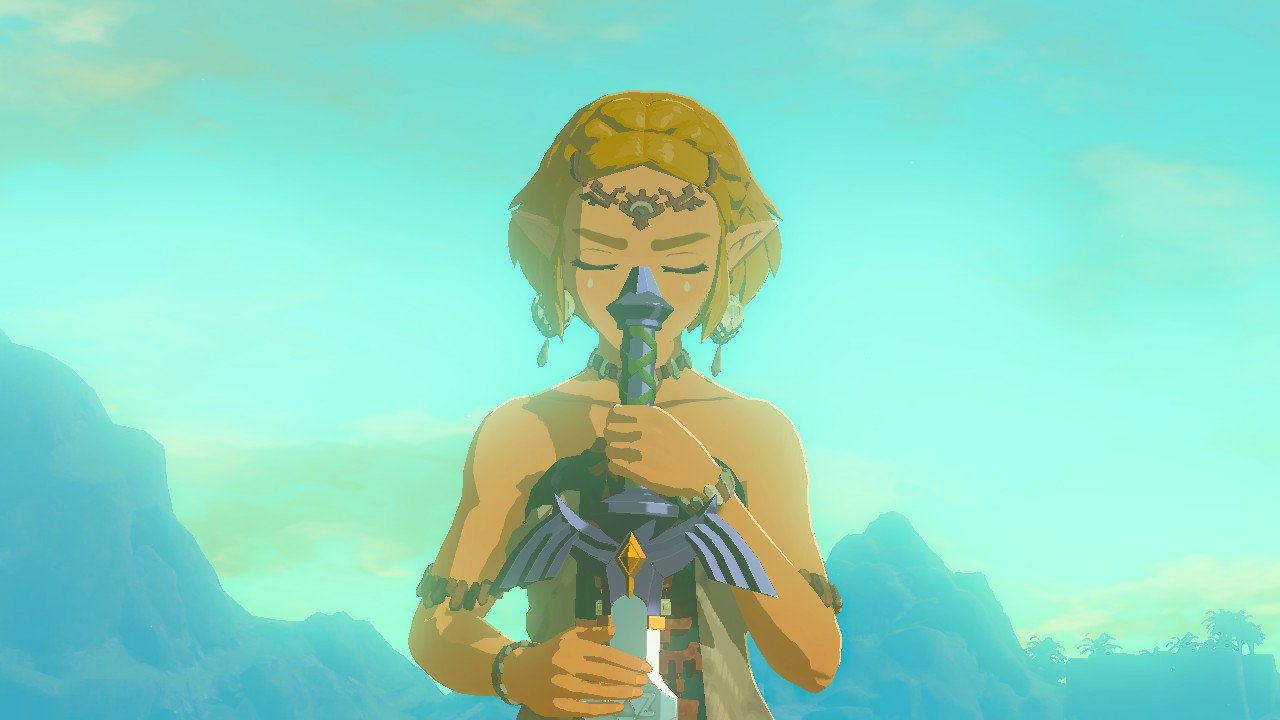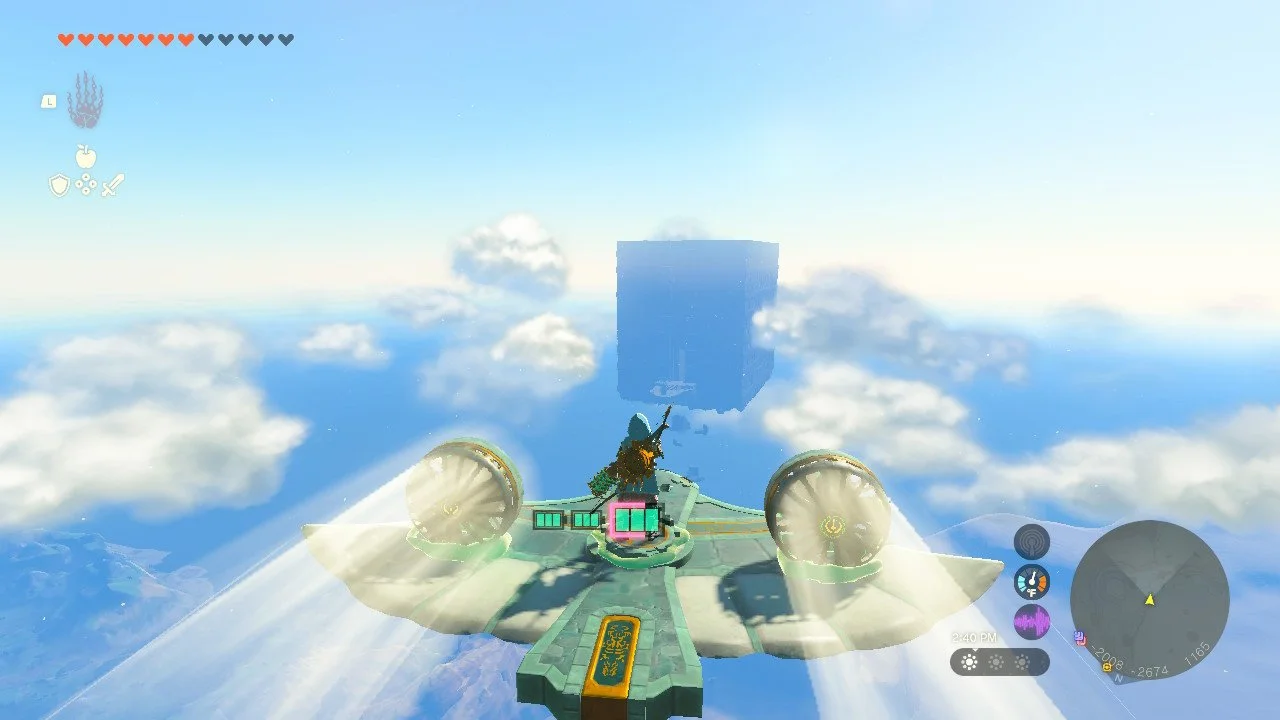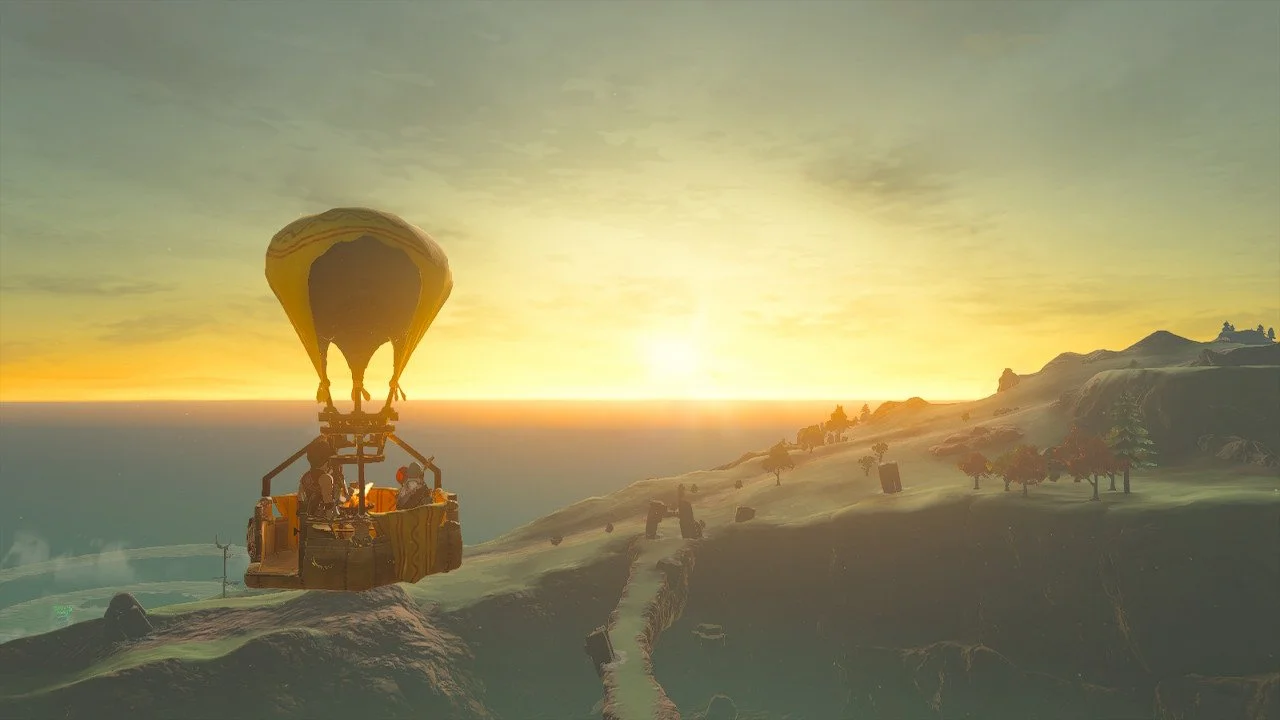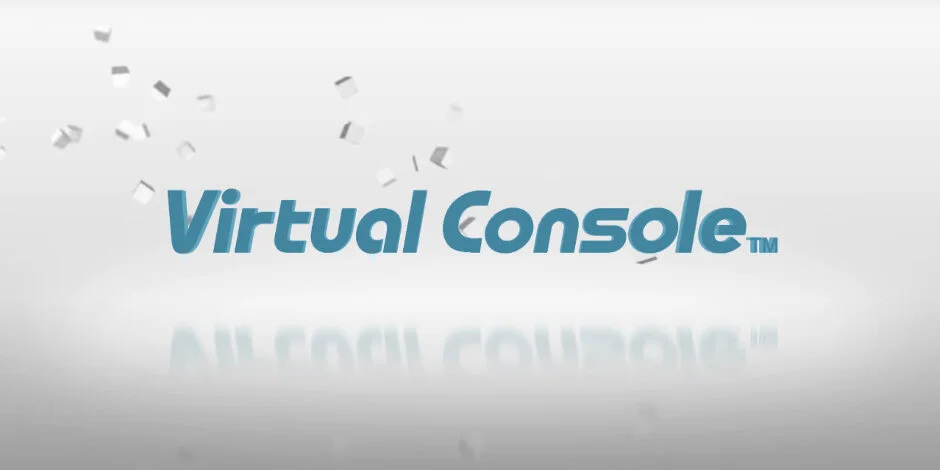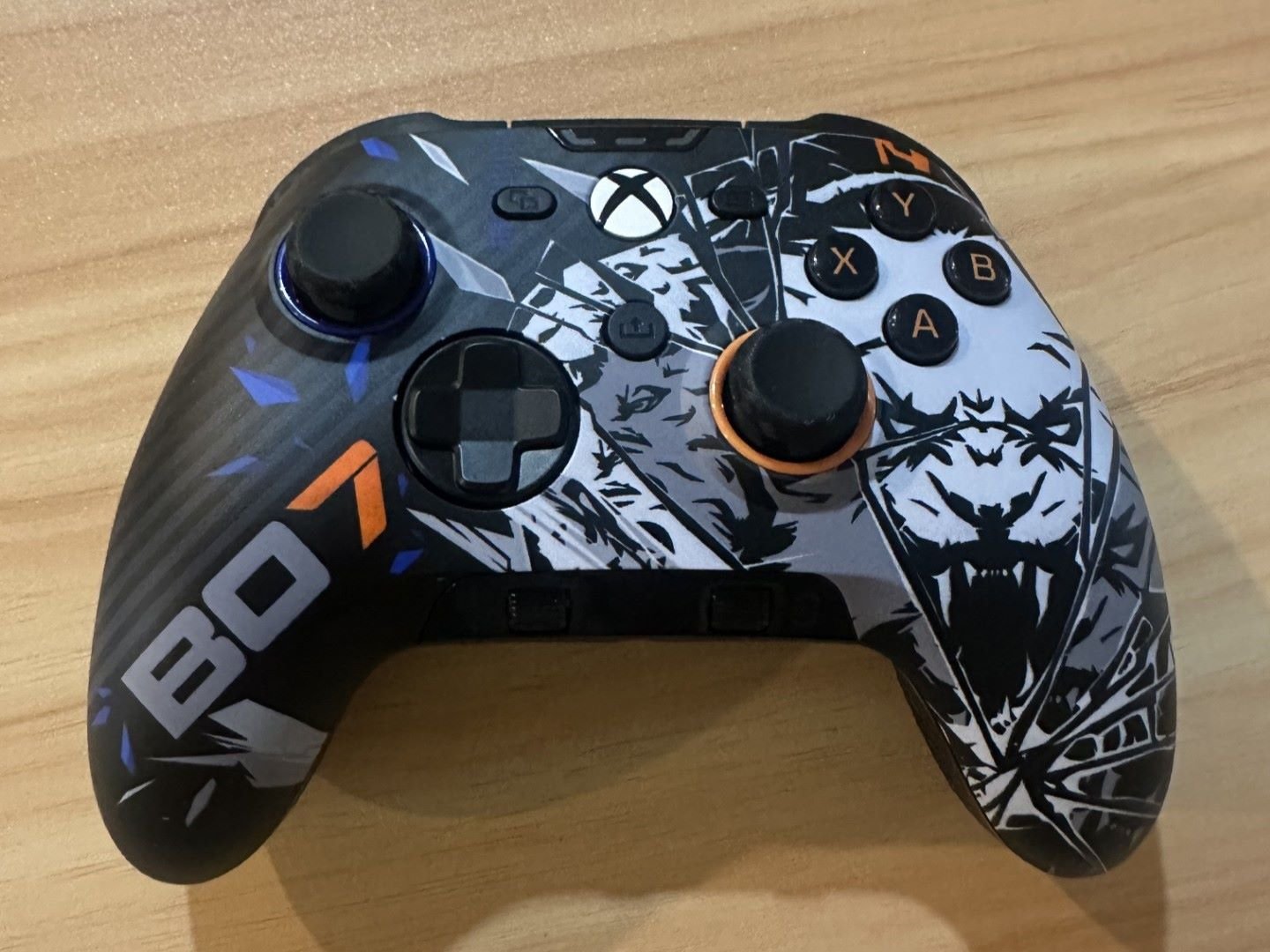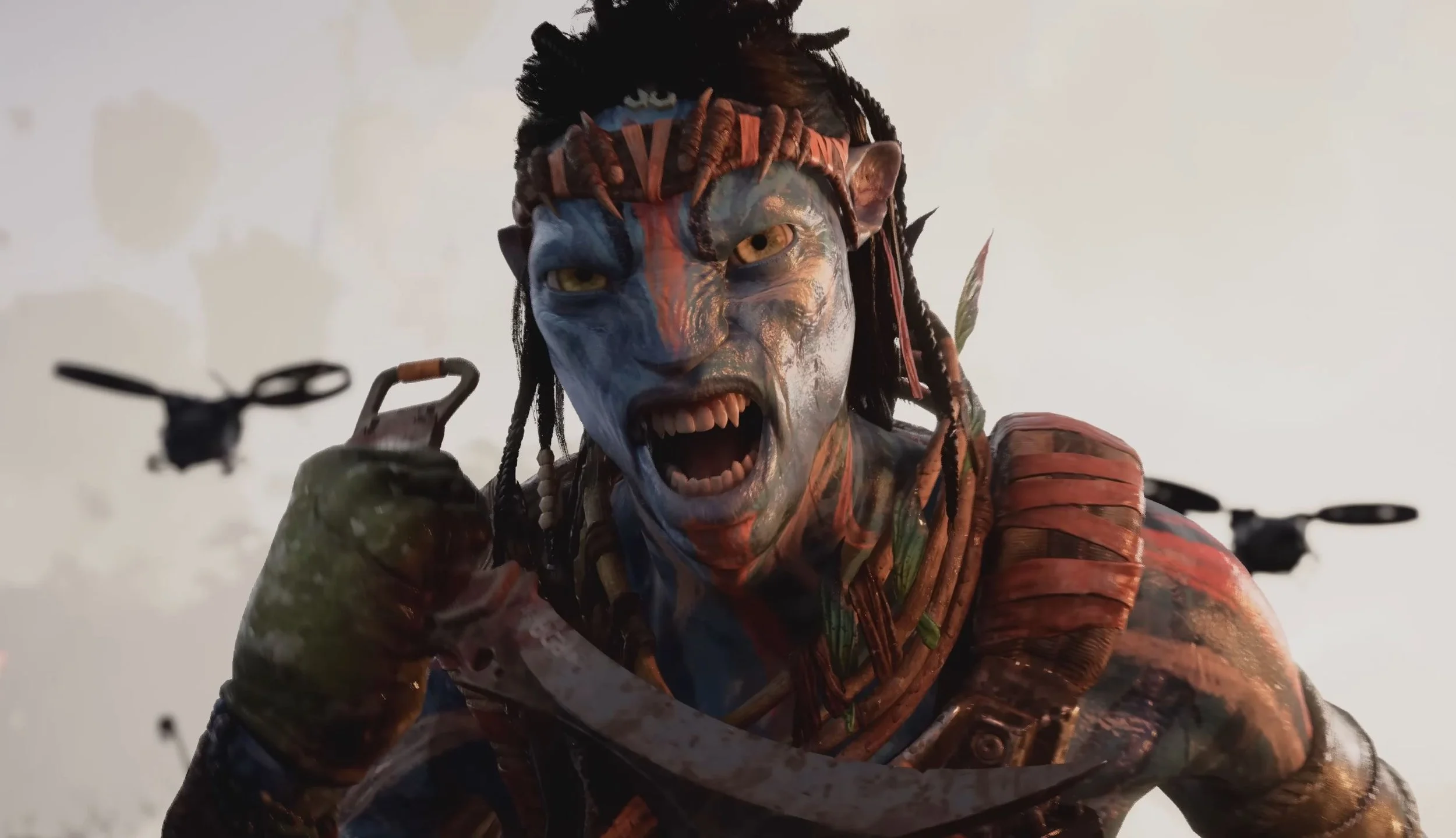Nintendo Switch review code provided by Nintendo.
The Legend of Zelda: Breath of the Wild (BOTW) was a generation-defining title that completely reinvented one of the most iconic video game franchises in history. It brought Link, Zelda, and their colorful cast of allies and enemies to a whole new level, breaking a mold that fans thought would stretch on into eternity. So to follow up something with that level of clout, Nintendo really needed to pull out all the stops.
And, in what can only be described as an absolute miracle, the former Hanafuda card manufacturer did just that. The Legend of Zelda: Tears of the Kingdom (TOTK) is a jaw-dropping sequel that manages to take arguably the greatest video game of all time and improve on it in almost every conceivable way. Powers are more influential, weapons are more personal, and the world has grown and evolved in the most delightful and unexpected ways.
Story
Tears of the Kingdom wastes no time in dropping you directly into its thrilling and shockingly dark story. The game opens with Link and Zelda exploring a series of hidden chambers below Hyrule Castle before stumbling upon the desiccated remains of a familiar foe. When the mummy suddenly wakes up, all hell breaks loose, draining Link of his power and separating him and Zelda for the umpteenth time.
When our intrepid hero comes to, he finds himself in possession of a strange new arm that bestows some incredible new abilities. Additionally, he somehow managed to get stranded on an island hundreds of feet in the sky. From here, the story begins to move at a pace dictated by each individual player, allowing you to essentially explore the world as you see fit.
As in Breath of the Wild, players can tackle any of the major storylines in any order. Want to check in on the Rito and see what Teba and Tulin are up to? Strike out to the North West. Or would you rather stop by Zora’s Domain to say hi to Sidon? All paths are open to you, but you’ll most likely stumble upon some other interesting quests along the way.
While TOTK shares this quality with its predecessor, the story at the heart of the game is much deeper and more impactful. The biggest reason for this is the presence of TOTK’s villain and Link’s longtime opponent, Ganondorf. The leader of the Gerudo and heir to the title of the Demon King, this version of Ganondorf is one of the most sinister and compelling takes on the character in his nearly 40-year history.
Much of his story is told via flashbacks to the era 10,000 years earlier known as the Imprisoning War. This also dovetails nicely with Zelda’s disappearance, the rumors of her reappearance in modern times, and The Legend of Zelda franchises’ penchant for time travel stories. It’s a testament to the overall quality of the narrative team that none of these time travel tales have ever felt tacky, and TOTK is no exception.
Every main story feeds into another, and much of the incredible cast from the first game return in much grander ways for the sequel. Their lives have advanced since you last saw them, and they take a more active role in reaching and solving each of the game’s major dungeons. The underutilized cast was a mild criticism some had for BOTW, and Nintendo clearly listened to that feedback.
Alongside the main quest objectives are a staggering number of side quests, adventures, shrines, collectibles, and activities that all have at least some narrative significance. Whether you’re helping an eager apprentice with advertisement signs or trying to become the best reporter in all of Hyrule, there’s not a single objective that doesn’t offer at least a brief moment of wholesome storytelling.
Gameplay
Tears of the Kingdom might be the most ambitious video game ever made. It might be the most ambitious digital product ever made, truth be told. There’s virtually no limit to what you can do in this game, and that’s coming off the ridiculous nonsense people pulled off in Breath of the Wild. And yet, Nintendo somehow managed to one-up themselves yet again.
The trick to this incredible creative output is the core abilities Link gains access to during the tutorial section of the game. Ultrahand, Fuse, Recall, and Ascend all grant Link the ability to influence the world in ways I never thought possible before. Suddenly gamers can transform random items on the ground into fully realized mechs that stomp across Hyrule like Godzilla.
Ultrahand allows you to manipulate almost any object and attach it to another compatible object, which was clearly designed to allow players to make hovercrafts, boats, and cars. While all of these vehicles are possible (and much more straightforward) to make, gamers have already started experimenting with even wilder concepts.
The aforementioned mechs have only grown in complexity, but players have also made tanks, bomber jets, and even giant statues with flaming, phallic appendages. Everything is fair game in this version of Hyrule, and it makes for an unbelievable gameplay experience, unlike anything I’ve ever experienced.
Fuse alters the combat game completely by restricting your base weapon options but blowing any limitations off what you can ultimately create. Monster parts fused to decayed weapons make for some powerful, if slightly ordinary armaments, but attach a bouncy mushroom to the end of your spear and suddenly you can send enemies flying with the press of a button.
Not enough for you? Take a Zonai machine and fuse it with a weapon to utilize that machine’s effects in combat. Water-spouting spears, flame-spewing swords, and spring-loaded hammers can all be made in just a few seconds, and the same goes for arrows and shields, too. TOTK doesn’t just encourage creativity in combat, it demands it.
The only downside to the overwhelming variety of options at your disposal is that TOTK doesn’t have the best management system for sorting through everything. I frequently found myself hitting the wrong buttons to open certain sections of the menu, which only grew more frustrating as I got deeper into the game. The lack of button remapping makes this even more egregious, as the user interface leaves much to be desired.
The simple fact that all of these systems work so well together is astounding, but it’s even more impressive when you consider just how tailored the world is to all of these abilities. Navigating the sky islands is a breeze on the back of a custom-made aircraft, and no cavern is too deep or convoluted to explore when you’ve got the easy escape of Ascend on hand.
Link’s new powers offer a sense of freedom that even Breath of the Wild couldn’t fully create. Exploration was a central theme in the first game, and Tears of the Kingdom builds on that by making every plane of Hyrule feel accessible and interesting. Even the Korok Seeds make a bold return with some fun new puzzles to solve, though one particular Korok puzzle appears frequently enough to get a bit annoying.
I never expected a Legend of Zelda game to be the last word in sandbox development, but that’s what Nintendo has pulled off here. They took one of the best open worlds ever made, shook it up, added new things, and then gave us the tools to explore it in almost any way we could possibly imagine. It’s an astounding feat, and I have absolutely no idea how they’ll manage to top it in the future.
Audio and Visual
As with Breath of the Wild, Tears of the Kingdom is a very pretty game that manages to make the most of the Switch’s limited hardware capabilities. While there are some framerate issues when the screen gets a little busy, overall this is an incredibly pleasing game to look at. Nintendo also managed to fix some of the asset pop-in issues that plagued the first game, as the world still looks very good from a distance. Some enemies still won’t populate until you get closer to them, but the environments still have density.
Every Legend of Zelda game has fantastic music, and Tears of the Kingdom is no exception. In fact, this game dials things up a bit with some fun, thematic nods to the new areas and central story motifs. The audio team played with rewound tracks to play with the notion of time travel, and many of the delightful, remixed themes from Breath of the Wild return as well.
What Could Be Better
The controls for navigating weapons and shields remain the same as it was in Breath of the Wild, but some of the new systems clutter the user experience in ways that can make combat extremely frustrating. Pressing up on the D-pad now opens up your materials menu, which can be useful for fusing things to arrows or dropping Zonai machines.
For anyone familiar with Breath of the Wild’s controls, however, this button opened up your Sheikah Slate abilities. So I found myself constantly attempting to switch powers only to pull out a bomb flower instead. It doesn’t help that your powers are now on a radial wheel instead of a linear bar, as I ran into many instances where I would flick the thumbstick too quickly and the game wouldn’t register me trying to change the ability. Having to reopen a menu multiple times to change powers in the middle of a tense battle resulted in more than a few deaths during my playthrough.
Verdict
The Legend of Zelda: Tears of the Kingdom is Nintendo’s magnum opus and a powerful feather in the Nintendo Switch’s cap this late into its life cycle! There’s no other game like this on any other platform, and I doubt there will be for many years to come. The scope of its world, the bevy of incredible powers, and the incredible story all come together to make The Legend of Zelda: Tears of the Kingdom one of the greatest video games ever made!
The Legend of Zelda: Tears of the Kingdom is available now for Nintendo Switch.
